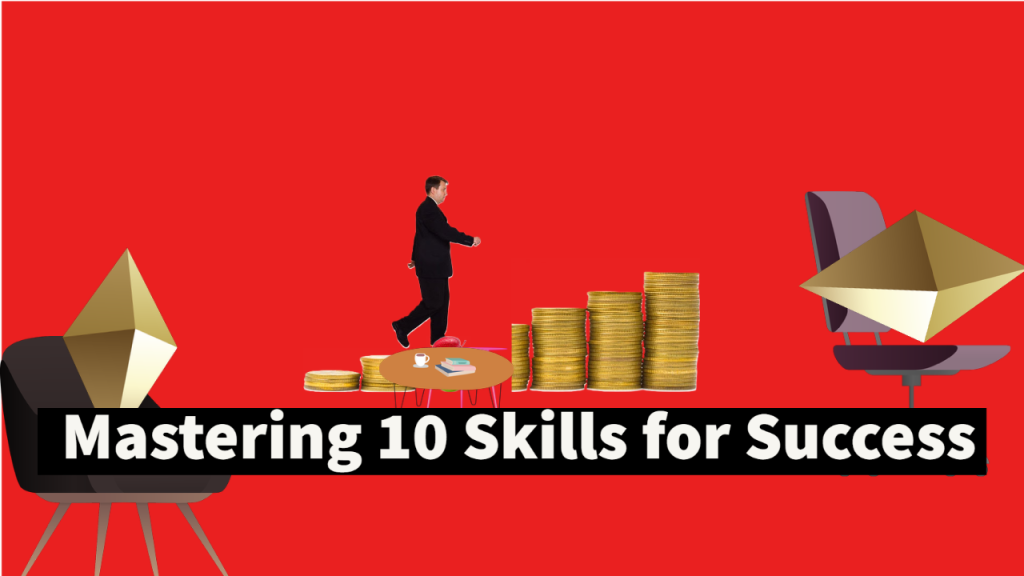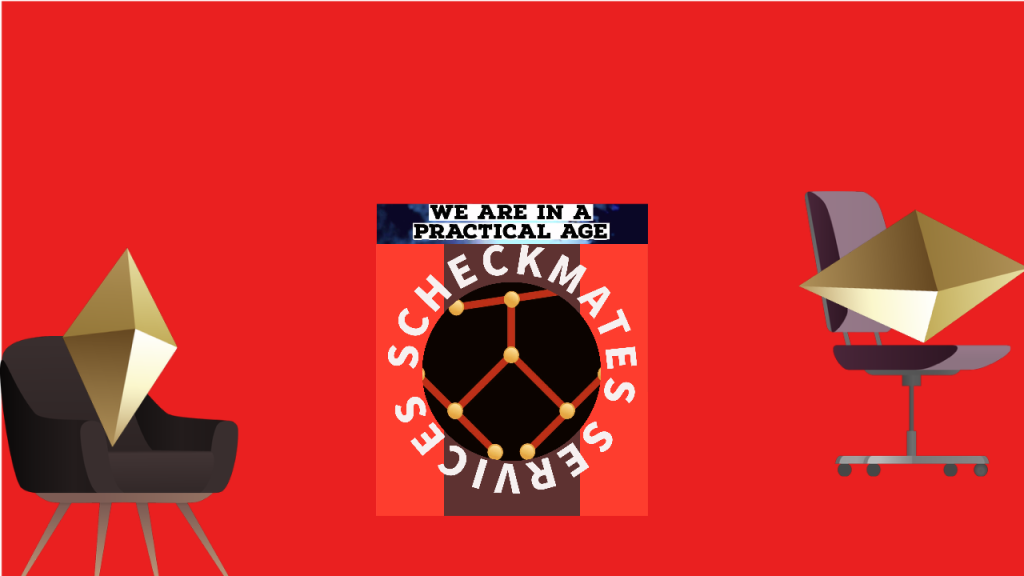Navigating the Future: Mastering These 10 Skills:
Generative AI
Explanation: Generative AI involves the use of machine learning models to generate new content, such as images, text, and music. It’s a cutting-edge technology that enables computers to create content that appears to be human-created.

Problem it can solve: Generative AI can automate content creation processes, save time, and provide new creative avenues. It’s used in fields like art, design, and even generating realistic video game environments.
Tools Required:
- Python programming language
- TensorFlow or PyTorch for machine learning frameworks
- GPT-3 or similar models for text generation
- DALL-E for image generation
Future Benefits: Generative AI has the potential to revolutionize creative industries by streamlining content creation, enabling unique and personalized experiences, and pushing the boundaries of what’s possible in art and design.
Step-by-Step Guidelines:
- Understand Machine Learning: Begin by learning the basics of machine learning and neural networks.
- Learn Python: Familiarize yourself with Python, a popular programming language for machine learning.
- Explore Frameworks: Study machine learning frameworks like TensorFlow or PyTorch.
- Text Generation: Start with simple text generation using GPT-3 models.
- Image Generation: Dive into image generation using DALL-E or similar models.
- Experiment: Experiment with different parameters and techniques to enhance your generative AI skills.
Skill 2: Prompt Engineering https://7dijits.com
Explanation: Prompt engineering involves crafting precise instructions or queries for AI models to generate desired outputs. It’s crucial for getting accurate and relevant results from AI systems.
Problem it can solve: Well-crafted prompts can improve the output quality of AI models, making them more useful and aligned with specific tasks.
Tools Required:
- Knowledge of AI models and architectures
- Understanding of natural language processing (NLP) concepts
Future Benefits: Effective prompt engineering enhances the usability of AI systems, making them more user-friendly and applicable across a wide range of industries.
Step-by-Step Guidelines:
- Learn NLP Fundamentals: Understand the basics of natural language processing and how AI models process text.
- Study Model Documentation: Study the documentation of the AI model you’re using to understand how to structure prompts.
- Practice with Simple Tasks: Start with simple tasks and experiment with different prompts to see how they affect the output.
- Iterate and Refine: Continuously refine your prompts based on the model’s responses and user feedback.
Skill 3: Extended Reality (XR) or Augmented Reality (AR)
Explanation: Extended Reality (XR) includes Augmented Reality (AR) and Virtual Reality (VR). AR overlays digital information onto the real world, enhancing the user’s perception and interaction with their surroundings.
Problem it can solve: AR can enhance education, entertainment, retail, and more by providing immersive experiences that bridge the gap between digital and physical realms.
Tools Required:
- AR development platforms (e.g., Unity with AR Foundation)
- Programming languages like C# or JavaScript
Future Benefits: AR has the potential to revolutionize industries by providing interactive, context-aware information and experiences that merge the physical and digital worlds.
Step-by-Step Guidelines:
- Learn AR Concepts: Familiarize yourself with the concepts of AR and its potential applications.
- Choose a Platform: Choose an AR development platform like Unity with AR Foundation.
- Learn Programming: Learn programming languages like C# or JavaScript, necessary for AR development.
- Create Basic AR Content: Start with simple AR experiences to understand the development process.
- Advanced Projects: Gradually build more complex AR projects and explore features like object recognition and tracking.
Skill 4: Metaverse
Explanation: The metaverse is a collective virtual shared space, merging physical and virtual reality. It’s an interconnected digital universe where people can interact, work, and socialize.
Problem it can solve: The metaverse can redefine how people collaborate, socialize, and experience digital content, creating new avenues for entertainment, commerce, and communication.
Tools Required:
- Familiarity with virtual reality, augmented reality, and blockchain technologies
Future Benefits: The metaverse could reshape industries, enabling remote work, immersive entertainment, and new forms of digital experiences.
Step-by-Step Guidelines: https://scheckmates.org
- Understand Virtual Worlds: Study existing virtual worlds and platforms to grasp the concept of the metaverse.
- Explore VR and AR: Gain familiarity with virtual reality and augmented reality technologies.
- Research Blockchain: Learn about blockchain technology and its potential role in the metaverse.
- Participate in Virtual Communities: Engage in online communities and discussions related to the metaverse.
- Experiment and Create: Start creating content or experiences that align with the metaverse concept.
Skill 5: Asset Tokenization
Explanation: Asset tokenization involves converting ownership rights of physical or digital assets into digital tokens on a blockchain. It creates fractional ownership and enhances liquidity.
Problem it can solve: Asset tokenization can democratize investment by allowing people to invest in fractions of high-value assets like real estate or artwork.
Tools Required:
- Knowledge of blockchain technology
- Understanding of legal and regulatory aspects
Future Benefits: Asset tokenization can make investments more accessible, improve liquidity for illiquid assets, and streamline ownership tracking.
Step-by-Step Guidelines:
- Learn Blockchain Basics: Understand the fundamentals of blockchain technology and how it works.
- Explore Token Standards: Study token standards like ERC-20 or ERC-721 for asset representation on a blockchain.
- Understand Legal Aspects: Gain insights into legal and regulatory considerations related to tokenized assets.
- Choose a Platform: Choose a blockchain platform suitable for asset tokenization (Ethereum, Binance Smart Chain, etc.).
- Create a Demo: Create a demo project tokenizing a simple asset to understand the technical process.
- Research Use Cases: Explore various industries where asset tokenization could be applied.
Skill 6: Smart Contracts
Explanation: Smart contracts are self-executing contracts with the terms of the agreement directly written into code. They automatically execute actions when predefined conditions are met.
Problem it can solve: Smart contracts can automate and secure various processes, from supply chain management to financial transactions, reducing the need for intermediaries.
Tools Required:
- Knowledge of blockchain technology
- Programming skills (e.g., Solidity for Ethereum smart contracts)
Future Benefits: Smart contracts can enhance transparency, security, and efficiency in various industries by automating processes and reducing friction.
Step-by-Step Guidelines:
- Learn Blockchain Basics: Understand the core concepts of blockchain technology and decentralized applications.
- Study Smart Contract Platforms: Familiarize yourself with platforms that support smart contracts, like Ethereum or Binance Smart Chain.
- Learn Solidity: Learn programming languages like Solidity for writing smart contracts.
- Create Simple Contracts: Start by creating basic smart contracts that execute simple actions based on conditions.
- Explore Complex Use Cases: Gradually move to more complex contracts that handle intricate processes.
ChatGPT
Skill 1: Zero-Knowledge Privacy https://scheckmates.org
Explanation: Zero-knowledge privacy is a cryptographic concept that allows one party (the prover) to prove to another party (the verifier) that a statement is true without revealing any information about the statement itself.
Problem it can solve: In an increasingly digital world, maintaining privacy while sharing sensitive information is a challenge. Zero-knowledge privacy can address data privacy concerns, secure transactions, and protect user identities.
Tools Required:
- Knowledge of cryptography fundamentals
- Programming languages like Python or JavaScript
- Libraries such as zkSNARKs (zero-knowledge succinct non-interactive arguments of knowledge)
Future Benefits: Zero-knowledge privacy will play a pivotal role in ensuring data security and privacy as our interactions become more digital. It can revolutionize online authentication, secure data sharing, and enhance confidentiality in various sectors.
Step-by-Step Guidelines:
- Understand Cryptography: Learn the basics of cryptographic techniques, including encryption and hashing.
- Explore Zero-Knowledge Proofs: Study zero-knowledge proofs and their variations (zkSNARKs, zkSTARKs, etc.).
- Learn Programming: Gain proficiency in a programming language like Python or JavaScript.
- Hands-On Practice: Implement simple zero-knowledge proof concepts to understand the mechanics.
- Experiment with zkSNARKs Libraries: Explore zkSNARKs libraries to implement more advanced zero-knowledge proofs.
- Apply to Real-World Cases: Develop applications that utilize zero-knowledge privacy, such as secure authentication or data sharing.
Skill 2: UI/UX Design in the Metaverse

Explanation: UI/UX design in the metaverse involves creating user interfaces and experiences for immersive virtual environments where the physical and digital worlds merge.
Problem it can solve: As the metaverse gains prominence, designing intuitive and engaging interfaces becomes crucial to ensuring seamless interactions within virtual spaces.
Tools Required:
- Design software like Adobe XD or Figma
- Familiarity with 3D design tools (e.g., Blender)
- VR/AR development platforms (e.g., Unity with XR tools)
Future Benefits: UI/UX design in the metaverse is essential for creating immersive and user-friendly virtual experiences. It will shape how people interact with digital content and services in a new dimension.
Step-by-Step Guidelines:
- Learn UI/UX Basics: Start with the fundamentals of UI/UX design principles.
- Explore 3D Design: Familiarize yourself with 3D design tools like Blender.
- Study VR/AR Development: Learn about virtual and augmented reality development platforms.
- Practice Designing Interfaces: Create mock interfaces for virtual environments using design software.
- Integrate 3D Elements: Incorporate 3D assets into your UI designs for immersive experiences.
- User Testing: Test your designs with potential users to gather feedback and iterate.
Skill 3: Online Community Building
Explanation: Online community building involves creating and nurturing engaged communities on digital platforms, fostering connections and collaboration among members.
Problem it can solve: In the digital age, fostering meaningful connections and engagement is vital for brands, businesses, and individuals seeking to build loyal and supportive online communities.
Tools Required: https://7dijits.com
- Social media platforms (e.g., Facebook Groups, Reddit)
- Community management software
- Content creation tools (graphics, videos, articles)
Future Benefits: Online communities are integral for networking, knowledge-sharing, and driving brand loyalty. Building and managing communities effectively can yield invaluable connections and opportunities.
Step-by-Step Guidelines:
- Identify Your Niche: Choose a specific topic or interest for your community.
- Select Platforms: Decide on platforms that align with your audience (e.g., social media, forums).
- Create Compelling Content: Develop relevant and engaging content to attract and retain members.
- Encourage Participation: Foster interaction among members through discussions, polls, and events.
- Moderate Responsibly: Establish clear guidelines and moderate discussions to maintain a positive environment.
- Collaborate and Grow: Collaborate with community members, leverage partnerships, and encourage growth.
Skill 4: Computational Thinking
Explanation: Computational thinking is a problem-solving approach that involves breaking down complex problems into smaller, manageable components, and creating algorithms to solve them.
Problem it can solve: Computational thinking equips individuals with structured problem-solving skills applicable in various domains, from software development to everyday decision-making.
Tools Required:
- No specific tools required; it’s a cognitive skillset
- May involve programming languages and tools based on specific problem-solving tasks
Future Benefits: Computational thinking fosters systematic problem-solving, critical thinking, and logical reasoning. These skills are valuable in diverse fields, including technology, business, and scientific research.
Step-by-Step Guidelines:
- Decomposition: Break down complex problems into smaller components.
- Pattern Recognition: Identify patterns and trends within the problem.
- Abstraction: Remove unnecessary details, focusing on essential elements.
- Algorithm Design: Develop step-by-step solutions or algorithms.
- Testing and Refinement: Test your solutions, iterate, and refine them as needed.
- Apply Across Domains: Practice computational thinking in various contexts to reinforce the skill.
Topic: Navigating the Future: Mastering Skills for Success
In the final analysis: As we step into a future characterized by technological advancement and interconnected digital landscapes, the skills we equip ourselves with play a pivotal role in shaping our success. In this article, we'll delve into four essential skills that are poised to reshape how we interact, solve problems, and thrive in the years to come. From harnessing zero-knowledge privacy to crafting immersive virtual experiences, from fostering online communities to cultivating computational thinking, these skills are the bedrock of future success.
